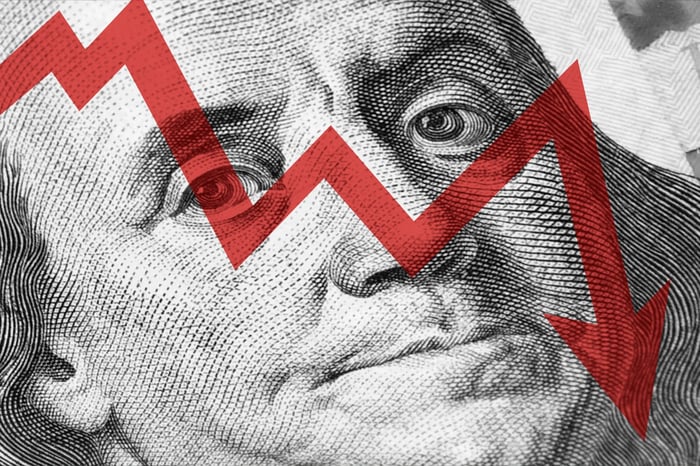UPS Stock Continues to Fall in 2025. Is There Room for Recovery?

Key Points
Tariff uncertainty, growing competition in the carrier space, and a union agreement has battered shares of the brown box giant.
The company is in the midst of an aggressive cost savings plan that could save it $3.5 billion.
Growth in B2B and healthcare logistics could help it replace shrinking e-commerce revenue.
Shares of United Parcel Service (NYSE: UPS) have fallen almost 30% on the year (as of this writing), as second-quarter domestic parcel volume and revenue fell below last year's numbers. Weak earnings, stagnating profits, and opacity into its 2025 outlook have soured investors on the industrial stock, which has been nosediving since hitting a high of $230 in early February 2022.
Is there a silver lining in the negative news, or should UPS investors dump the brown box giant? Let's take a look.
Where to invest $1,000 right now? Our analyst team just revealed what they believe are the 10 best stocks to buy right now. Continue »

Image source: Getty Images.
Battling against strong winds
One of UPS's biggest puzzles right now was formerly its biggest boon: consumer e-commerce.
During the height of the pandemic, consumer e-commerce was UPS's bread and butter, as locked-down households turned to online shopping for everyday products. Fast-forward to the present day, and the same segment that brought growth (business-to-consumer deliveries) has declined 10.9% in Q2 2025.
Part of this is UPS's own doing. Earlier this year, the company announced it was moving on from its biggest customer, Amazon (NASDAQ: AMZN), in search of higher-margin customers. Share prices plummeted almost 15% on the heels of that news.
To add insult to injury, Amazon is on track to become the largest U.S. parcel carrier by volume by 2028. This highlights the stiff competition in the carrier industry, which is gradually eating away at UPS's market share.
Can UPS recover?
Will UPS recapture its consumer e-commerce dominance? Doubtful. Its role as the world's largest carrier company? I think it's on track to be just that.
Two bright spots for UPS are healthcare and business-to-business (B2B) deliveries, which carry higher margins (read: more profitable) than consumer parcels. Building out its specialized logistics segment could give UPS steadier growth than consumer e-commerce, as well as cushion the blow from shrinking residential deliveries.
Then there's its "Efficiency Reimagined" plan. This plan, which includes closing facilities and erasing 20,000 jobs, will reportedly save the company about $3.5 billion in 2025. Reducing costs is essential for healthy margin expansion, especially after a union agreement in 2023 led to an increase in employee costs.
To be sure, I wouldn't bet on a UPS rebound happening this year. Shifting from lower- to higher-margin customers will take time, and, likewise, seeing results from its cost-cutting strategy could take a few quarters. But for investors who believe that decades of logistics expertise will keep UPS grounded, today's price could make UPS an attractive buy in retrospect.
Should you invest $1,000 in United Parcel Service right now?
Before you buy stock in United Parcel Service, consider this:
The Motley Fool Stock Advisor analyst team just identified what they believe are the 10 best stocks for investors to buy now… and United Parcel Service wasn’t one of them. The 10 stocks that made the cut could produce monster returns in the coming years.
Consider when Netflix made this list on December 17, 2004... if you invested $1,000 at the time of our recommendation, you’d have $649,657!* Or when Nvidia made this list on April 15, 2005... if you invested $1,000 at the time of our recommendation, you’d have $1,090,993!*
Now, it’s worth noting Stock Advisor’s total average return is 1,057% — a market-crushing outperformance compared to 185% for the S&P 500. Don’t miss out on the latest top 10 list, available when you join Stock Advisor.
*Stock Advisor returns as of August 18, 2025
Steven Porrello has positions in Amazon and United Parcel Service. The Motley Fool has positions in and recommends Amazon and United Parcel Service. The Motley Fool has a disclosure policy.





